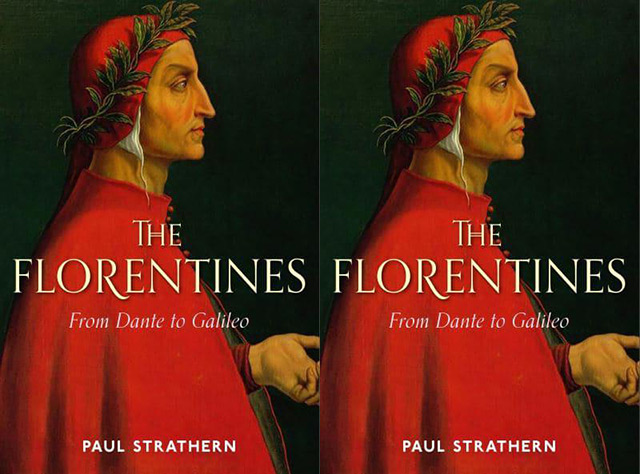The Florentines: From Dante to Galileo
Book review

The Florentines: From Dante to Galileo, Paul Strathern, Atlantic Books, 2021, 372p, £20-00. ISBN 9781786498724.
Very occasionally we are offered an entirely new perspective on a body of detail with which we already seem entirely familiar but which has the effect of transforming our understanding. Paul Strathern’s The Florentines: From Dante to Galileo is such a work. What we thought we knew about Florence is presented to us within the framework of a new analysis.
There is new detail, from the prosaic to the complex. We learn at one end of the spectrum that the ‘florin’, with which we used to be very familiar in England, owes its name to Florence and that when we ‘bank’ we are reflecting the Florentine practice of carrying our financial transactions on open tables. Equally we are offered a stimulating analysis of the imagery of Dante’s Inferno and the place and significance of the various characters involved.
What Paul Strathern has done is to argue that the special ingredients to be found in Florence from the late fifteenth century to the early seventeenth century made it uniquely the cradle of the Renaissance. Within this small city and its immediate neighbourhood so much that we would recognize as the Renaissance characteristics emerge. It is a powerful argument because it is clearly the case that the artistic activities of Michelangelo, the universally recognized inventiveness and artistic output of Leonardo da Vinci and the transformative scientific discoveries of Galileo were all nurtured in this intellectual cauldron. Added to this is the enduring influence of Niccolo Machiavelli’s The Prince within European political thought and action. The overall impact of these and other local scholars on the intellectual and cultural life of Europe in truly astounding. Naturally other arguments for the flowering of aesthetic ideas and processes at other locations and chronological periods may easily be offered but the status and importance of Florence at that particular time is basically unchallengeable.
Paul Strathern, therefore, does offer very powerfully the case for status of Florence as the cradle of the Renaissance. His argument is very carefully crafted by analysing on the nature of the cultural trends that were emerging in and around Florence, interwoven with its economic, financial and international strengths and links, along with a strong explanation of the emergence and importance of the role of the Medici family, within the local political rivalries and power struggles.
This is powerfully argued and very carefully researched, and the supporting illustrations help convey the dynamism of the Florentine contribution to the Renaissance. This book should take its place as a major commentary on the development and evolution of the Renaissance and just how exceptionally the various elements came together in Florence.

